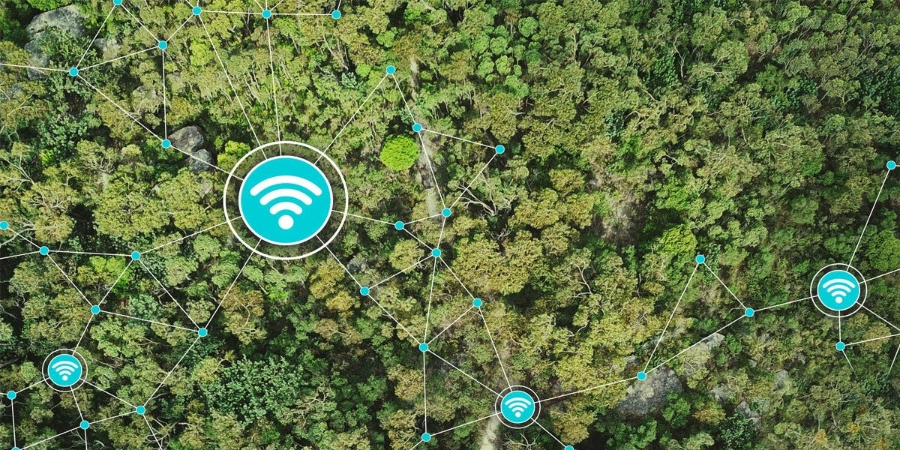The Silent Guardians: Harnessing the Power of AI in Forest Conservation
What kind of technology does a forest use?
Technology has shown to be a game-changer in the important field of sustainable forest management. Among other cutting-edge technologies, satellite data and drone photos have completely changed how we track and monitor deforestation, changes to the forest area, and distinguish between different types of forests.
What is the purpose of AI tools?
A software program that employs artificial intelligence algorithms to carry out particular tasks and resolve issues is known as an AI tool. AI tools can be used to automate processes, analyze data, and enhance decision-making in a range of industries, including marketing, finance, healthcare, and education.
What role does AI play in reforestation?
AI can identify the best plants for a given place by analyzing data on soil conditions, climate, and local biodiversity using machine learning algorithms. This guarantees that the replanted areas are sustainable and enhance the diversity and health of the surrounding ecosystems.
What role does AI play in wildlife?
AI is used in animal conservation to do tasks including data processing, habitat monitoring, and species identification. Large dataset processing and task automation that are essential to conservation efforts are made easier by it.
Remote sensing and image analysis: Artificial Intelligence can be used to examine satellite or drone images to follow changes in land use over time, identify different species of trees, monitor forest cover, and evaluate deforestation.
Predictive Modelling: AI algorithms can be used to build models that forecast the expansion of forests, the likelihood of fires, or the spread of illnesses. Planning and decision-making for sustainable forest management can be aided by these models.
Monitoring Wildlife: Researchers can analyze population dynamics, migration patterns, and the effects of human activity on ecosystems by using AI-powered cameras and sensors to watch wildlife in forests.
Smart Forest Management: Artificial intelligence (AI) can make recommendations for the best planting, harvesting, and conservation techniques by evaluating a variety of variables, including soil characteristics, weather patterns, and historical data.
Natural Language Processing (NLP): NLP algorithms can be used to evaluate text input, draw conclusions, and create or classify content automatically in a blog setting.
For the most recent information about AI applications in forestry blogs, please go to the latest sources as the specific tools and technology in use may differ. If you have a certain instrument or piece of technology in mind, please let me know so that I can provide you with more precise and pertinent information.
Using AI to Promote Climate Resilience and Sustainable Forestry Practises
Artificial intelligence (AI) is developing at a rapid pace, and the forestry industry is no exception. The demand for adaptive forest management has increased as climate change continues to present serious threats to the world’s forests. Artificial intelligence (AI) technologies present a valuable tool for forest managers and policymakers, with the potential to transform sustainable forestry practices and improve climate resilience.
Using remote sensing technology, such as satellite imaging and LiDAR (Light Detection and Ranging) data, to monitor the health and dynamics of forests is one of the most important uses of artificial intelligence in forestry. Massive volumes of data from many sources can be processed by AI algorithms to find patterns and trends, such as shifts in the species composition of trees, rates of forest development, and disturbances like pests, illnesses, and wildfires. With the use of this data, forest managers will be better able to distribute resources, give conservation activities top priority, and create plans to lessen the effects of climate change.
AI can be used, for instance, to forecast the spread of alien species or forest pests, like the mountain pine beetle, which has decimated a large number of trees across North America. Artificial intelligence (AI) algorithms can predict where beetle outbreaks are likely to occur next by evaluating previous data on outbreaks and environmental conditions. This information enables forest managers to take preventative actions to safeguard susceptible areas. In a similar vein, authorities can utilize AI to prioritize fire prevention and suppression efforts by predicting the likelihood of wildfires.
Optimizing forest management techniques to improve carbon sequestration and storage is another exciting use of AI in forestry. As a result of their ability to absorb and store vast amounts of carbon dioxide from the atmosphere, forests are essential for reducing climate change. However, the production and health of the trees will determine how effective this natural climate response is. Artificial intelligence (AI) can assist forest managers in determining the optimal management strategies to optimize carbon sequestration. These strategies may include choosing tree species that are well-suited to shifting climatic conditions or maximizing the frequency and severity of forest thinning and harvesting activities.
Source

